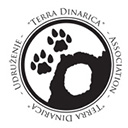THE CITY OF SUN, STONE'S THROW AWAY FROM THE SEA
Trebinje, like a beautiful maiden, captivates everyone who visits it. Nestled at the crossroads of our country, Montenegro, and Croatia, our southernmost city basks in the sun for 260 days per year. It warms the air, melts the stone, gives life to olives, figs with red pulp, and burst-open pomegranates, all accompanied by the fragrances of the sea brought by the winds from the Adriatic coast.

Dalibor Stojnić
Someone once described Trebinje as a beautiful picture that only needs framing. Yet, perhaps that frame would only distract from the beautiful scenery — from the sixteen 130-years-old plane trees planted in a perfect rectangle in the very center, and from the Trebišnjica, a subterranean river, which divides the city in two. Its water mills irrigate the surrounding land and breathe life into Trebinje. Trebinje native Savo Pujić narrated the story of these mills in the book Vodena kola na Trebišnjici (Water Mills on the Trebišnjica River).
The symbol of the city is the Arslanagić Bridge. Documents in the Dubrovnik archive confirm it was not named after the builder or the benefactor, Mehmed-pasha Sokolović. It likely got its name from Arslan-aga, who had the Sultan’s permission to collect tolls on the bridge. Later, a whole settlement, Arslanagić Bridge, was built around it. The bridge was moved, stone by stone, from its original location due to the construction of the hydrosystem on the Trebišnjica River, five kilometers downstream from its original site.

Samir Zahirovic
Trebinje is also traversed by a cycling path that traces the route of the old narrow-gauge railway constructed during the Austro-Hungarian era. It is named after the most famous train that ran on that track — Ćiro.
Cyclists can now tour the most famous attractions of Herzegovina — from Mostar to Dubrovnik — along a trail spanning 157 kilometers. A segment of the trail passes through Trebinje, from the city to the village of Jazina. The majority of the trail runs alongside the Trebišnjica River and a lake. The path is flat, with gentle slopes. There are no trucks, trailers, or traffic. Cycling, nature, tranquility, and an accelerated pulse.

Toni Zorić
Orjen Nature Park
Located at an elevation of 1,100 meters, 20 kilometers from the city, the Ubla picnic area features a stone mountain lodge dating back to the Kingdom of Yugoslavia.
It’s ideal for walking, hiking, and fitness training. Despite the abundance of sunny days, winter tourism has developed on Mount Orjen, at the base of which Ubla is located, with snow lingering until spring.

Toni Zorić
The Orjen Nature Park is a true gem with 80 kilometers of marked trails. Notable attractions include the remains of the medieval town of Klobuk, the Roman bridge Vučija, stećci necropolises in Aranđelovo, Konjsko, and Bravenik, along with the aforementioned picnic area.
The Museum of Herzegovina was established in 1952, thanks to the poet and diplomat Jovan Dučić, who is buried in the Church of the Annunciation on Crkvina Hill, and his collection of valuable exhibits is part of the museum’s display.
Find this QR code on the location:

































